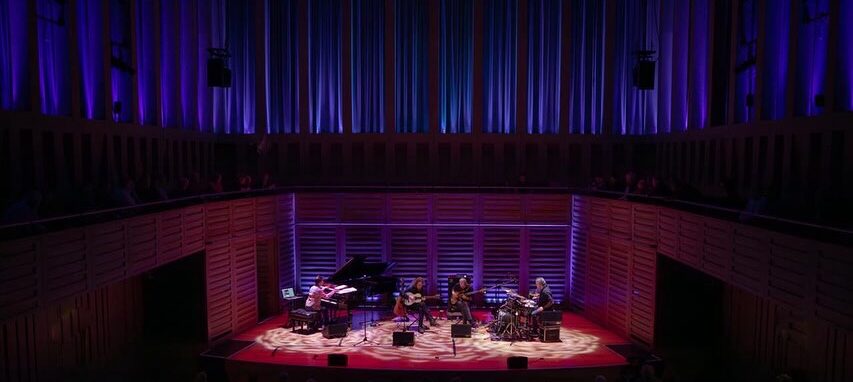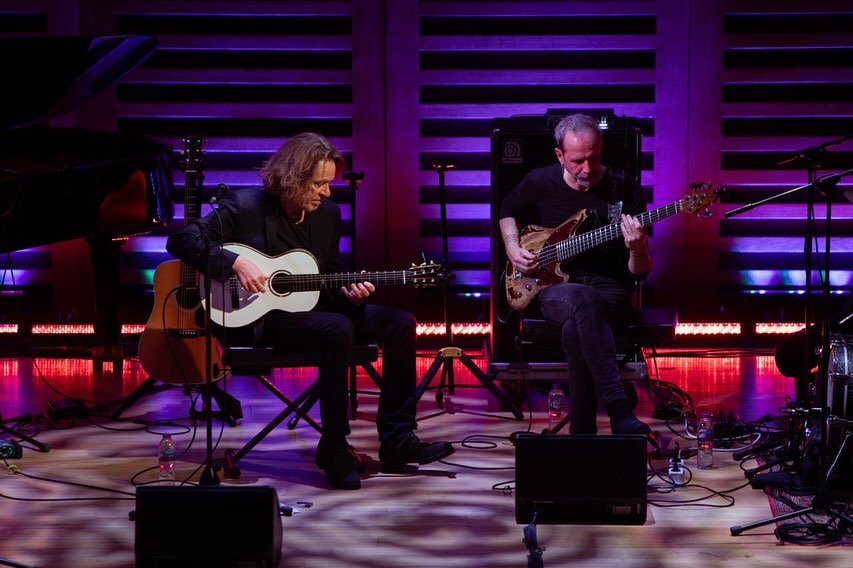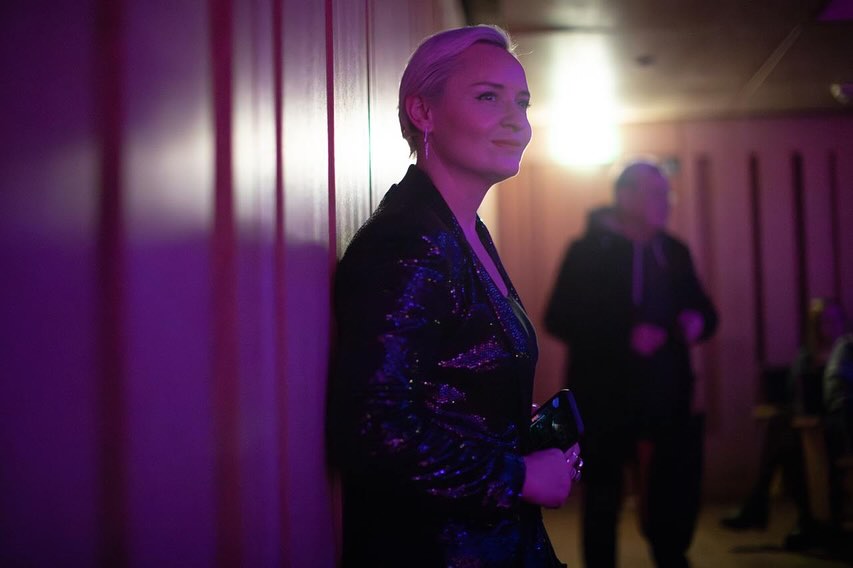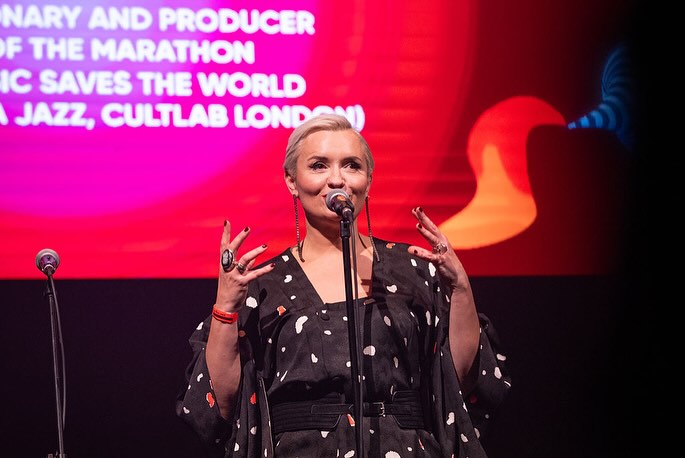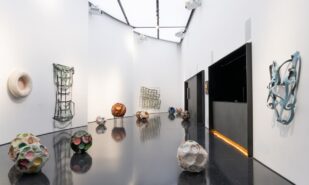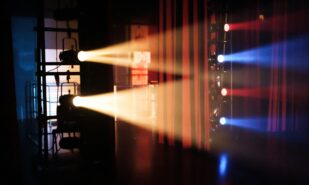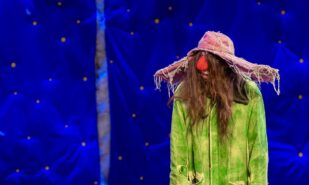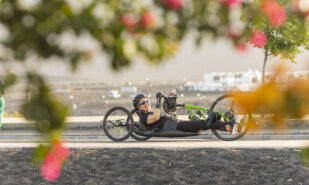Dominic Miller, the legendary guitarist and collaborator of Sting, Tina Turner, and Genesis, took to the stage at London’s King’s Place without a setlist, without predictability, and seemingly without a plan—and it was magnificent! A light ambient soundscape emerged with piano and guitar gently complementing each other. But soon, the barely audible melody disappeared, as bass and drums entered, adding density and boldness. Miller didn’t dominate with his guitar—he steered the flow like a ship’s captain, confidently setting the course without being overbearing.
An Evening of Jazz with Dominic Miller and Maria Semushkina
And of course, there it was: “Shape of My Heart” (after all, it’s hard to forget that this iconic hit was co-written by Sting and Miller). But this time, Dominic didn’t play the over-familiar version that 90s romantics had worn out. Instead, he performed a clever trick: starting with the recognisable theme, he deconstructed it into fragments, only to reassemble it as a hybrid of jazz, folk, and sounds reminiscent of Buenos Aires streets. This wasn’t the old, well-known hit but its deconstruction, with the shadow of the original surfacing only occasionally.
The entire concert grew and transformed before the audience’s eyes, like a living being. Every musician in the band had the chance to shine, yet even individual solos never felt isolated, constantly showcasing how seamlessly the group’s relationships were built—each member wrapped in the supportive accompaniment of the others.
Then, unexpectedly, Miller’s daughter Misty stepped up to the microphone. “It’s a family business,” Dominic joked. But there was no pragmatism here: her voice was deep and passionate, and the song choices were perfect: “Yesterday Once More” (1973) by The Carpenters and “Misty,” famously performed by Ella Fitzgerald.
After roaring applause, Dylan Fowler, an old friend of Dominic’s (with whom he released a collaborative album of Latin American and jazz compositions in 1984), joined him on stage. Decades later, their layered guitar interplay sounded like a dialogue between two people who have long understood that life’s beauty lies not in competition but in collaboration—sharp, delicate, beautiful, and deeply human.
Of course, there was “Ripped Nylon” from the album November, reminiscent of a carousel of jazz, blues, and early Pink Floyd-style progressive rock, followed by the tender “Valium” from Silent Night. (Dominic quipped with a smile that he didn’t even know why he named the piece “Valium”—he’s never tried it.) A solo piano piece in the style of the late 1940s morphed into something alt-rock-esque with a synthesiser and a rich bass riff. There was also a composition clearly inspired by The Beatles’ “A Day in the Life,” but with a guitar that led into a melancholic trance.
The finale? Miller dedicated it to Argentina, the country where he was born and spent his childhood, and to a local card game that, according to him, involves shouting, cheating, and madness. The perfect conclusion! The entire evening had been just like that: chaos turned into art, ruled by improvisation. It wasn’t a concert for those seeking cozy hits but for those who love experiencing the strange and the vibrant. And it was worth it!
***
After the concert, we spoke with Maria Semushkina, the international producer and organiser of Dominic and his band’s performance.
Maria, critics consider Dominic’s music to have a unique atmospheric and even cinematic quality. Why did you decide that King’s Place was the right venue for this concert?
I chose it from the perspective of a music producer who always strives to present artists in the best sound quality. In my experience (and I’ve seen many concerts in this hall), King’s Place has always been attractive, especially acoustically, for jazz. London has a wide variety of venues, but the combination of intimacy and acoustic excellence made King’s Place perfect for Dominic’s music. He told me he really appreciated the high-quality sound and was delighted to play here.
Was there anything unique or challenging about organising this performance compared to other artists you’ve worked with?
Not at all. Working with him and his team was very comfortable, even though the musicians are currently on an extensive tour. Everything went smoothly on both sides.
Why was this the only concert in the UK?
It’s probably because the tour is very long, and it’s hard to fit in additional dates. Moreover, we were fortunate to secure an available venue. Believe me, organising concerts in London often involves challenges with venue availability and costs. Additionally, Dominic’s musicians are from different countries, and many are heading off for Christmas holidays—to Paris, Tel Aviv, and elsewhere. It’s a very international band.
Did you know that Dominic would focus not on presenting the album (his tour supports Vagabond) but on improvisation and unpredictability, or was that a surprise for you too?
His guests were a surprise for us—for instance, I didn’t know his daughter and Dylan Fowler would perform. So yes, it was unexpected, but a pleasant surprise!
What’s next in your plans?
Right now, I’m focusing on working with a range of international artists. For instance, we’re negotiating with several musicians in the improvisational jazz genre. There are plans to create a festival combining contemporary jazz with artificial intelligence. This is a new concept I’ve devised: visual content generated by AI based on the music, projecting the jazz sounds onto a screen. The project is in development, and we plan to host the event in a large concert club in London.
I hope this will grow into a major open-air event similar to “Usadba Jazz”. But this would be in 2026. I’ve already found a suitable venue near London and want to hold a large festival, introducing my unique organisational approach. I’ve been attending many events, observing, and realising how much my experience could contribute to the British scene.
I’m also planning to continue the Music Saves the World project, a festival supporting musical nomads. I think we’ll be able to repeat it in London next year with a new program and later bring it to Amsterdam, Berlin, and Paris. And this won’t just be about Russian-speaking musicians. I’m gradually introducing collaborations. Let’s say musical nomads are a truly global concept—they might flee wars, repression, regimes, ecological disasters, or simply move around the world trying to find their audience. So Music Saves the World is a humanitarian mission.

